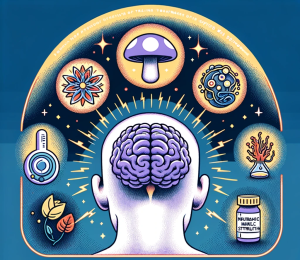
Does Recreational Marijuana Reduce Opioid Deaths?
Imagine living in a world where one policy change could potentially save thousands from the grip of opioid addiction—a real modern-day dilemma facing public health officials today. As states across the U.S. grapple with the devastating opioid crisis, some are turning to an unconventional ally: recreational marijuana. But does it help, or is it just a smokescreen?
Recent research diving into this question focused on the early adopters of recreational marijuana laws (RML): Colorado, Washington, and Oregon. Using sophisticated synthetic control methods, researchers crafted a mirror world of what opioid death rates might look like in these states if they hadn’t legalized recreational marijuana. The findings? A hint of hope, but no statistical smoking gun.
What We Learned
In essence, the study found a decrease in opioid death rates in all three states post-RML, though these decreases weren’t statistically significant. Here’s the breakdown:
- Colorado saw an average decrease of 6.49 deaths per 100,000 people.
- Washington’s decrease was around 2.89 deaths per 100,000 people.
- Oregon reported a reduction of 4.80 deaths per 100,000 people.
Despite these promising numbers, the changes weren’t strong enough to definitively credit marijuana legalization with the declines. The results stayed in the realm of what might just be random chance.
Practical Applications
While the direct impact of RML on opioid fatalities remains murky, the research opens several avenues for public health policy and practical measures. For instance, states pondering RML as part of their public health strategy might look at these findings as a baseline to craft more targeted interventions that address both opioid misuse and the potential therapeutic uses of marijuana.
Broader Context
This study plugs into a larger conversation about how we manage pain and addiction. Opioids, while effective painkillers, carry a high risk of addiction and overdose. Marijuana, considered less addictive and with fewer side effects, could offer a safer alternative for pain management. Moreover, this research underscores the need for more comprehensive studies, particularly as more states legalize marijuana and the national landscape evolves.
What’s Next?
Looking ahead, researchers are keen to expand this analysis. Future studies could assess the impact on hospitalizations, non-fatal overdoses, and other public health metrics. As more states join the RML bandwagon and as societal norms shift, especially in the wake of the COVID-19 pandemic, understanding these dynamics becomes even more crucial.
Join the Conversation
What do you think about using policy changes like RML to combat public health crises like the opioid epidemic? Could marijuana be a key player in our pain management arsenal, or are we just scratching the surface of a more complex issue?
- How do you see these findings impacting public health policies in your community?
- Are there other unconventional methods that might offer a beacon of hope in tackling opioid addiction?
- What are your thoughts on balancing the potential benefits and risks of marijuana legalization?
This conversation is just beginning, and your insights are invaluable. Share your thoughts and experiences—let’s explore these pressing questions together and consider how we can all contribute to healthier communities.
Don’t Miss Out – Subscribe Now!
Public health needs your voice today. Join thousands of leaders already making a difference. Subscribe for free to This Week in Public Health and receive weekly updates packed with tools to drive change.
🚨 Urgency matters—take action now and share this blog to expand our reach!



